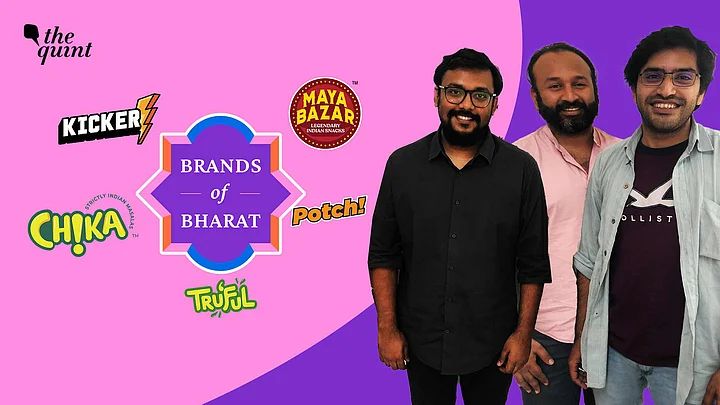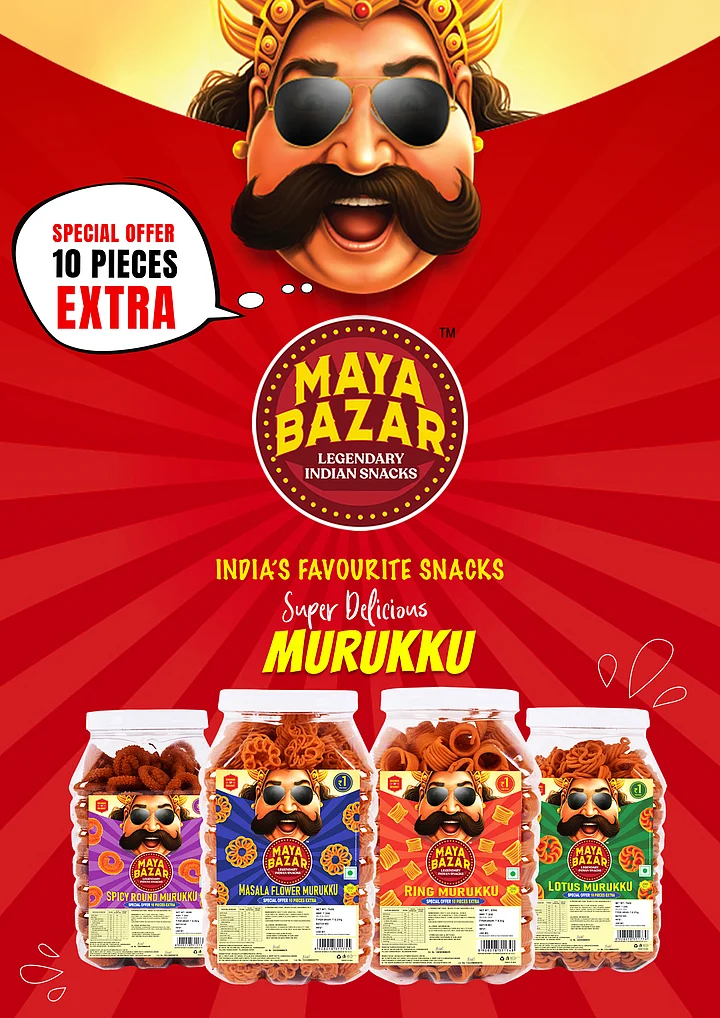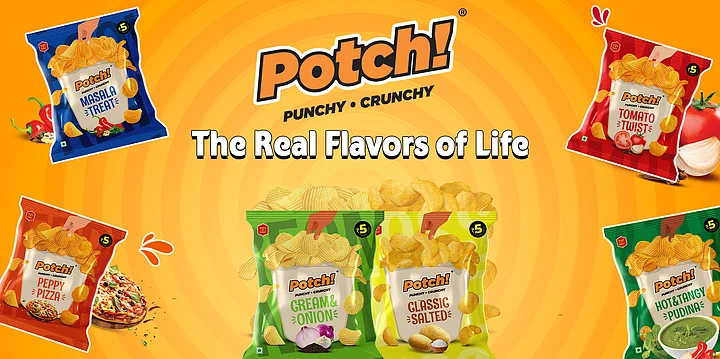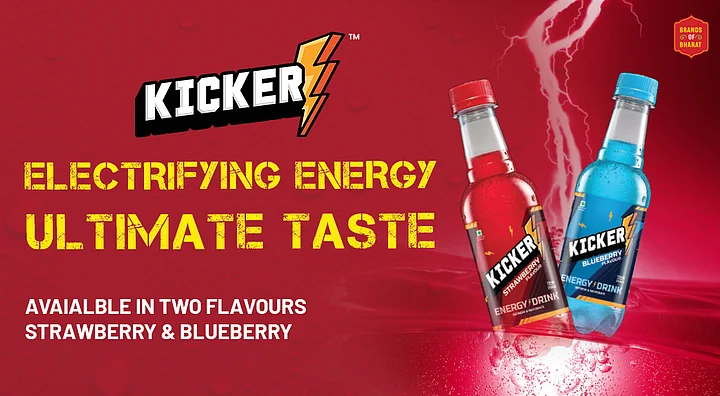The year was 2019-20.
Three engineers - Rohit Fernandes, 37, Udit Dhawan, 36, and Ravi Teja, 35 - the first two neighbors from a crowded Bengaluru locality and the third a friend from IIT had spent a few years pursuing their own life trajectories in varied industries and different geographies when fate decided to play an active role to bring the three of them together. Bound with a common goal of focussing on India’s next half billion while turning entrepreneurial, the trio was mulling over several possibilities when a chance event occurred.
In 2021, Rohit and Ravi found themselves at a small roadside kirana shop on Tannery Road that stocked local snacks, some soft drinks, water and a few other items that millions consume on a daily basis. Hungry, they bought a few packets of Bablu. These are branded packets of chips and fryums for Rs 2, which they ate.
That’s what got them thinking about what the masses were consuming: not people like us but people like them. Who in 2021 could be selling something for Rs 2 and who could be consuming it? What is and does the real India consume?
Prior to this, the founders had actually started a distribution network for large FMCG companies - like HUL, Marico, or P&G for instance. But this chance event planted a brand new seed in their minds which after a few iterations and refinement sprouted into Brands of Bharat.
Local is King
It was at the kirana store in Bengaluru that reality hit home. “Barring us, everybody was eating a 2 or 5 rupee snack!”, says Rohit. A majority of Indians, they began to realize, were not consuming what Amazon, Flipkart and other large e-commerce platforms or the big super markets sell. Tastes, choices, and preferences of consumers in Tier 2 and Tier 3 India were quite region-specific, distinct, and dictated more by local brands than anything else. 60-70 percent of the consumption from these small kirana shops is of products produced by unorganized brands - a bit like what MTR used to be - which have over time scaled and were in many cases doing turnovers of Rs 150-300 crore annually.
In the 1990s, 80 percent of FMCG consumption came from the top 50-60 companies, be it Hindustan Levers, Pepsi, P&G, Marico, Godrej, Britannia which in 2020 has come down to 50 percent and it’s further continuing to come down. “It was in some way like the license raj. A few MNCs or large family owned Indian companies dominated and met most of the consumption needs of India but over time this has changed”, says Fernandes.
The downward trend continues primarily since the CAGR of these 30,000-odd small brands with a turnover of Rs 5 crore and more is 25 percent while the large established players might be growing at a CAGR of 9-10 percent. “This is what got us thinking. Why are we working with large FMCGs when the real value lies with the aspiring next half billion: those catering to the real India”, says Rohit. HUL, he says, back in its day was focussing on precisely this segment then and the proof of the pudding is before us today.
These small and unorganized brands contribute to around 20 percent of total FMCG sales, cater to households that typically earn between Rs 30,000 to 50,000 a month and cut across segments : from home care to personal care to beverages and snacks. As the trio started researching, they found thousands of small brands like Bindu Jeera - a beverage produced in Mangalore, consumed only in Karnataka and unheard of in the rest of India but with a turnover of at least Rs 500 crore or Bablu, Panjwani or a Maharaja soaps, all with turnovers of Rs 100-200 crore. Over time some of the brands have even been acquired by the biggies like Indulekha by HUL or Sunrise Foods by ITC.
They also realized how many products were dictated almost entirely by the local palate, preferences and habits developed over the years. “Three different parts of Karnataka consume a different coloured detergent bar and soap. Mysore and Mandya consume a blue one, just 100 kilometers away in Hasaan, households use pink and North Karnataka and areas of Gulbarga use a green detergent bar”, explains Rohit. He believes that people have traditionally been using these for decades and they believe that these colors and the minor differences they represent produce the most lather for the kind of water they have in their region. “This is how specific things can get”, he adds. Moreover, these established habits rarely or change very slowly as people tend to do what they see at home for decades.
A second epiphany was how many of the small brands who managed to hit the right spot at some point with their products - brands like Phantom cigarettes or Phat-A-Phat - but failed to scale, sustain, grow or even survive due to a variety of factors including little exposure and know-how on growing businesses. “In many cases, the next generation is neither interested nor willing to take what the family has set up and run for decades”, he adds. So what they also found was that a remarkable number of fairly decent brands had disappeared without a trace over the years.
At the other end of the spectrum, the mass market or the average common man wants to and is upping the ante. With the advent of the Internet, almost nothing was soaring as high as aspirations countrywide: what the cities consumed was what the rest of India aspired for. More flashy, snazzy and more bling were in, along with better quality and packaging. In food categories, more “healthy” would soon follow. Aspirations however were outstripping incomes. So the question the trio asked themselves was :”Can we give them products that they aspire for at a price they can afford?”
Bottoms Up HUL and a Brave 25 Taka Pull
That’s when the idea crystallized in their minds. Why don’t they build a HUL from the opposite end? A “Bottoms Up Hindustan Levers” kind of company that either acquires or makes products that the next half billion will be willing to consume at price points that they can afford?
To do this, the founders decided to adopt both strategies : acquire existing brands where they could help those scale and grow, and build brand new brands that represent local tastes and preferences. As a new age company and with an increasingly health conscious India, they also decided to try and “healthify” whatever they produce.
The big question that was staring the team in the face even as they gave finer touches to its idea was how to build a distribution network to reach small kirana stores and how they get retailers to be excited about, push or even show interest in stocking the brands they decide to build or grow?
The distribution networks used by the larger players are often not available to small brands due to stipulations that prevent the distributors from pushing competing products. Also, supermarkets or the typical online e-commerce sites would not even consider stocking products that cost Rs 5-30. Most direct-to-consumer brands today cater to the top 5 percent of income earners in India.
There’s where the trio decided to take its most innovative, yet courageous gamble: offering a minimum cut of 25 percent to entice retailers to stock and sell their products and what works for the impact funders who have bought into the initiative. As Abhirup Sarkar, principal at Omidyar Network India explains :”The margins that small retailers and kirana shops in India work with have been squeezed over the years, and very few big brands offer anything more than 5-10 percent at best”. This was the deal “maker” for Omidyar Network India, he argues, which views all investments from the impact lens. Retailers have very little leeway on their earnings as big brands get bigger and mightier. Also, for many of these very small retailers almost 40-50 percent of their sales are coming from Brands of Bharat brands and a 25 percent margin on this means a far higher earning per month. So, all in all, this translates into improved livelihoods and lives for them and their families.
A Basket of Brands
So over the last two years, five brands have been introduced:
“Mayabazar” which is like a Haldiram or Bikanerwala for regional snacks from South India: even a humble murukku varies wildly by taste and color even within a few kilometers in the same state,
“Chika”, corn puffs with flavors inspired by Indian spices like masala and Guntur chili,
“Potch” potato chips that offer buyers a Lays or Bingo like experience at a fraction of the price
And two beverages:
“Kicker”, an energy drink on the lines of Red Bull, and
“Truful”, a fruit juice brand that is on the lines of Frooti and Real
- 01/04
(Photo: accessed by author)

- 02/04
(Photo: accessed by author)

- 03/04
(Photo: accessed by author)

- 04/04
(Photo: accessed by author)

With these five brands, Brands of Bharat is either partnering with the existing manufacturer to help him scale or build upon their existing brand by taking a majority in the business and working closely with the original founder, which also helps them leverage his wealth of local knowledge and experience.
A sixth brand the company acquired is “2Bit”, a quality product with reasonable recall that was selling through around 200 retailers and clocking sales of around Rs 10-15 lakh every month. The founder however was unable to scale, reduce costs or add more retailers to his portfolio. In January 2023, Brand of Bharat acquired the business which had its main facility near Tumkur in Karnataka, spent a couple of months reviewing the products and relaunched with new flavors added this April. By June, the monthly sales of 2Bit reached Rs 60 lakh and the total retailers stocking the products rose ten fold.
Rome Wasn't Built in a Day
To reach where it has so far, the Brands of Bharat have raised a total of US $ 7 million in funding from a few investors including Inflexion Point Ventures, Omidyar Network India and Axilor. As things stand, the company has totted up revenues of Rs 60 crore a year and will be raising a new round of funding within the next year. 3-4 more brands are in the pipeline which will include new product lines including home care products like detergents.
60 percent of the stake of the company is held by its three founders and 40 percent is with its investors and ESOPs. The company has 80 full time employees of which five would constitute the senior management. In addition, it has 200 contractual staff who constitute the “ground force” who are primarily in sales and operations and are sourced through manpower agencies and hyper local hiring apps.
Also, nobody including the founders expects the journey they have chosen to undertake to be an easy one. At a macro level, challenges abound. The biggest one is facing the music the moment a brand begins to get noticed by the biggies. Whenever a bigger player or rival sees any share erosion - some newbie chipping at its pie - there’s usually a barrage of incentives, discounts and even rival launches to ensure that the newcomer sinks without a trace: if selling airplane seats is competitive business, this is hyper competitive.
In the FMCG space, the challenges can equally be internal as logistics, keeping costs in check and scaling up can all be Herculean in a country of India’s size and diversity while offering a larger chunk than almost anyone else to kirana shops. The 25takka gambit seems to have worked so far as the platform now has a total of 10,000-odd retailers stocking their brands who they reach directly across the states of Karnataka, Kerala, Andhra Pradesh and Tamil Nadu. Another 15,000-odd retailers stock their brands through distributors currently. Even combined, the two still represent a drop in the four state’s vast ocean of around 8-9 lakh retailers.
But even as the number of retailers stocking Brands of Bharat grows, this is no guarantee for eventual success. “A 25 percent margin looks good on paper, it’s hard to say what it would do to the bottomline going forward”, says Roy Cherian, an engineer and MBA from IIM Ahmedabad, who has done stints with Nestle and UB Group before turning entrepreneurial.
A Mumbai qualitative research firm which has close to three decades of expertise in the consumer insights space, The Third Eye, founder and managing director Gitanjali Ghate says that while one can see a massive opportunity with the emergence of everything regional - “right from music to cuisine” - creating a HUL bottoms up type of firm for a brand aggregator will not be a piece of cake as “hyper-local” focus is already big and competition in the space is pretty intense. Her partner and co founder, Jasmeet Kaur Srivastava, an IIM-Ahmedabad alumni, adds that consumers today too are constantly evolving and far more discerning than ever before while being already quite set in their habits so for someone to be able to “add value that goes beyond the right price point” could be a challenge.
Besides India’s macroeconomic trajectory and a bit of luck, as Brands of Bharat works on converting its dream into reality, a lot will depend on how technologically savvy and logistically driven the business is and how smartly the team separates the wheat from the chaff in its brand selection. As the saying goes, the world needs dreamers and the world needs doers.
But above all, the world needs dreamers who do.
(The original content was commissioned by Omidyar Network India. We are offering readers an abridged version of the original.)
(Anjuli Bhargava is a senior writer and columnist based in Goa.)
(At The Quint, we question everything. Play an active role in shaping our journalism by becoming a member today.)




